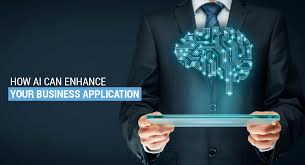Source:-thehindubusinessline.com
Organisations are looking to AI models to bring out digital transformation in business. But, understanding which kind of models are most suited to the business needs is crucial
As enterprises are discovering the benefits of artificial intelligence (AI), they realise the journey to AI is long and bumpy. Many CIOs (chief information officers) want AI to quickly transform their business without identifying which processes will perform better with AI. In an ideal world, one can pick any process, infuse it with AI and then discover the pros and cons during the journey. The best way to learn is on projects rather than researching through theoretical case studies.
But there needs to be some order to the madness. Can we generalise some patterns that could make it easy for business owners to apply AI? Let’s discuss some scalable, enterprise-relevant AI patterns.
Discover new processes: This is about finding new opportunities afforded by AI. Consider the example of a defect in a machine, degrading over time. An experienced mechanical engineer can deduct the condition of the machine from the sound generated. What if there was a process wherein the mechanical engineer documents what he ‘hears’ and how he maintains the machine? This is where an acoustic AI model can be created, which can analyse sound samples of the machine to predict failures. It’s common sense for an engineer that a noisy machine is the first sign of mechanical failure; shouldn’t this important data can be put to value?
Imagine driving down a highway and an alert pops up on the dashboard saying, “Possible less lubricant”. It confirms the driver’s gut feeling that there’s something wrong in the car.
Most of the acoustic models today use humans to classify the data fed into the model; over time, the model learns to classify on its own. For example, we need to gather at least 10,000 sound clips of failed and normal ball bearings to classify the anomalous sounds and detect the issue. Not an easy task, but it can tremendously help in predicting failures in mines, underground subways, nuclear plants and highly critical sites unapproachable by humans.
Reinvigorate old processes: This pattern improves existing processes by introducing AI. For instance, almost every organisation collects data from the employees’ badges, which provides information on access control and employee movement. Reinvigorating this process by adding occupancy sensors and then adding AI will help derive deeper insights such as the number of people per floor. This data can be fed into an AI model to predict the occupancy rate and help organisations reduce the cost associated with each desk and decide how much office space should be leased or vacated. The ability to predict churn of clients, machine failure, energy usage etc are all examples of how old processes can be reinvigorated with new AI models.
Unlock data: Organisations can derive value from their data by applying AI. For example, machine learning algorithms can be used to detect fraud in financial transactions or even an asset defect, which would otherwise go unnoticed by humans. One Machine learning model can be fed time-series data to discover patterns of anomalies, while another can be fed asset manuals to find contextual text of the faults. One of the widely used examples of applying AI to businesses is handling unstructured data in the form of texts, videos, and tweets. Several organisations across industries have benefitted from this pattern, including telcos with millions of call records, banks with loan records, manufacturing units with work orders etc.
Opening new channels: This is another area where we have seen several businesses apply AI successfully. This essentially means starting a new channel of interaction with customers or employees using AI-based virtual assistants with natural language processing technologies. Unlike the dated IVR system, this new channel is helping organisations reach their clients and service them in unique ways.
We can pick any AI process and it’s sure to fall in one of the four patterns mentioned above. What is needed is the right understanding of which process to choose and then applying the right AI methodology to solve the business problem. Once the process is chosen, along with the the right algorithm and data quality, one also needs to check for bias in the model. Explanation of why a certain recommendation is the most right one needs to be included too.
